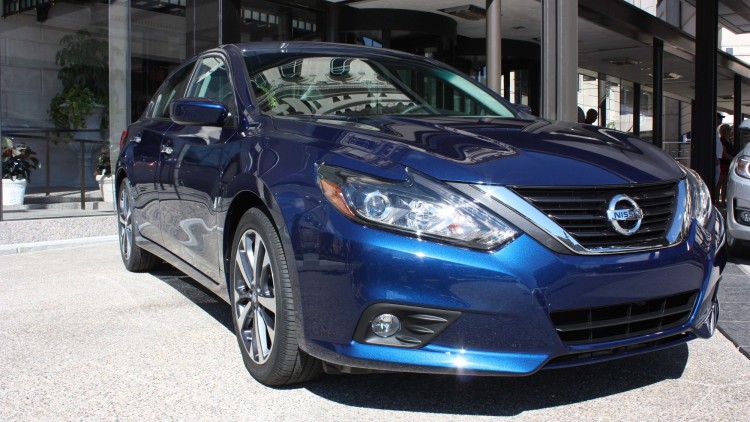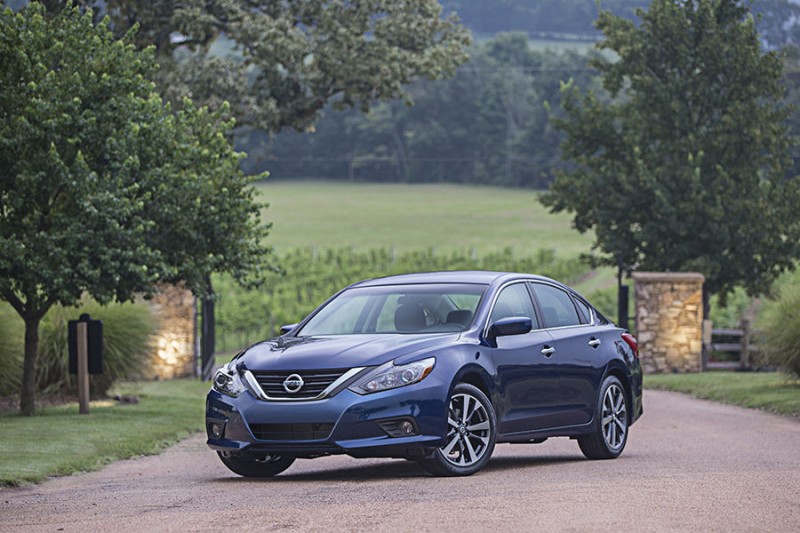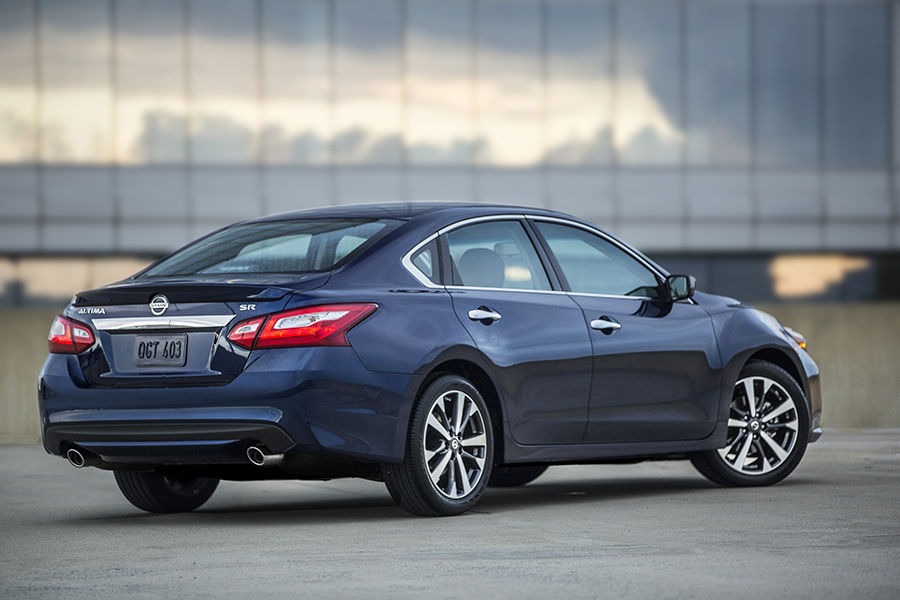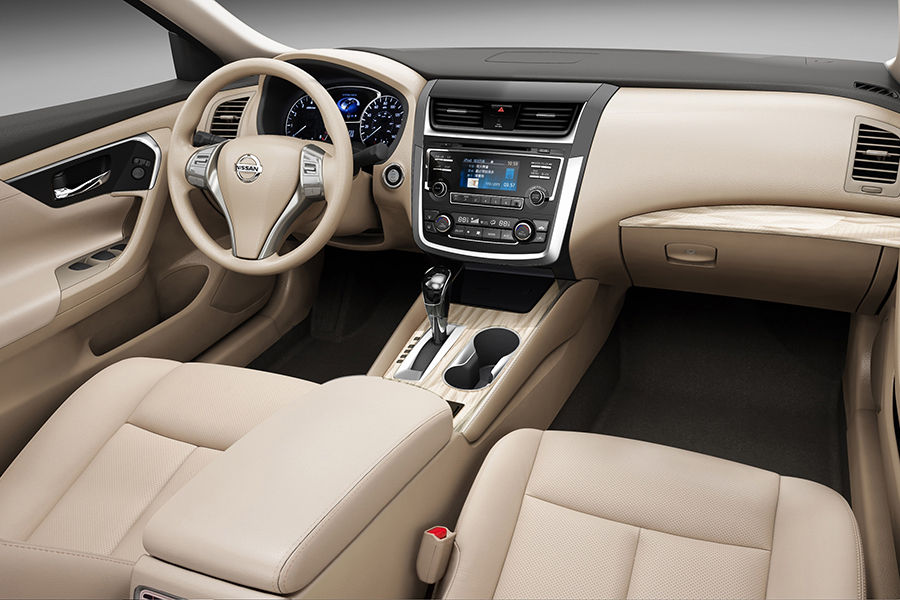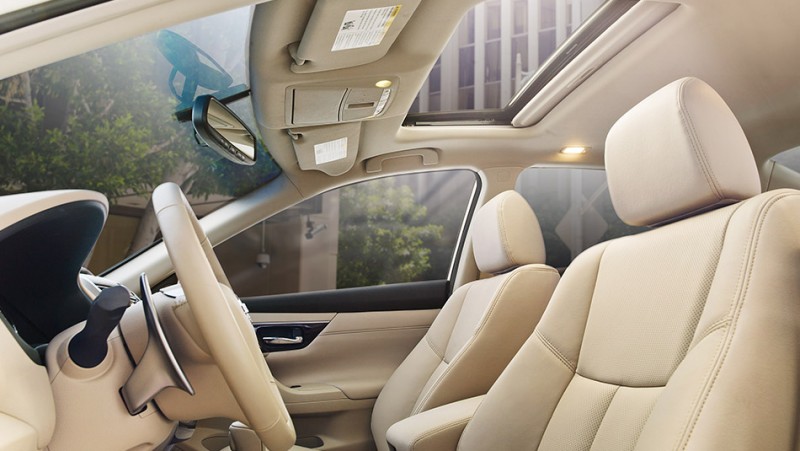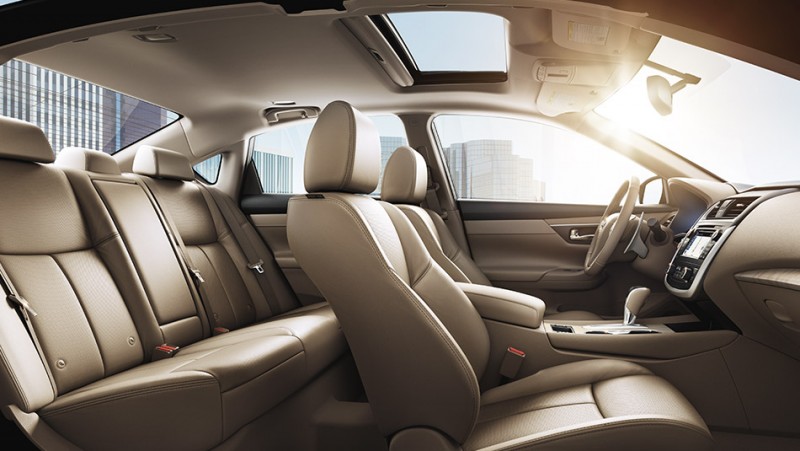What’s New for 2016
The 2016 Nissan Altima receives a midcycle styling refresh, along with new advanced safety features and a sporty SR trim level.
Introduction
It’s only been three years since the Nissan Altima received a full redesign and in that short span its competition has surpassed it in many ways. The 2016 Nissan Altima strives to restore relevance with an exterior styling update, a handful of new features and a sporty new SR trim.
The new V-shaped grille up front brings the Altima up to date with other Nissan vehicles and, when combined with sharper headlights and taillights, it does breathe some life back into its predecessor’s comparably plain appearance. The addition of adaptive cruise control, paired with forward collision warnings and automatic braking, may also entice shoppers.
Unfortunately, the interior has largely been ignored in this midcycle refresh. The drumbeat of technology has made the Altima’s once praiseworthy infotainment system old news compared to the latest units from rivals. The same holds true for the materials used in the cabin. The Altima’s engine performance is still strong, however, and fuel economy remains at or near the top of the field for both the four-cylinder and V6.
Overall, the current-generation Altima isn’t quite as dominant in 2016 as it was in 2013. It’s still perfectly adequate on its own, but when compared to newer A-rated sedans like the Honda Accord, Mazda 6, Hyundai Sonata and its Kia Optima cousin, it becomes very clear that the Nissan has been surpassed.
Body Styles, Trim Levels, and Options
Classified as a midsize sedan, the 2016 Nissan Altima seats five and is available in five main trim levels: base, S, SR, SV and SL. These trims are further differentiated by an engine size prefix: 2.5 for the four-cylinder and 3.5 for the V6, but the 3.5 is only available in SR and SL trims.
The Altima 2.5 in base trim includes 16-inch steel wheels with plastic covers, keyless remote entry, push-button ignition, full power accessories, air-conditioning, cloth upholstery, a six-way manually adjustable driver seat (four-way front passenger seat), 60/40-split folding rear seats, Bluetooth phone and audio connectivity, a four-speaker stereo with a CD player and Nissan’s Easy Fill Tire Alert system that flashes the lights and beeps the horn to signal when the tires reach the correct pressures.
The 2.5 S trim adds automatic headlights, cruise control, keyless ignition and entry, Siri Eyes Free voice recognition for iPhone users, a rearview camera and a six-speaker audio system with a 5-inch display, a USB port and basicNissan Connect smartphone app integration.
The new sporty SR trim upgrades the 2.5 S with 18-inch alloy wheels, daytime running lights, foglights, a rear spoiler, a sport-tuned suspension, simulated manual shift control via shift paddles, sport seats and an eight-way power adjustable driver seat (with two-way power lumbar).
Compared to the 2.5 S, the SV trim has 17-inch alloy wheels, an eight-way power driver seat, remote engine start, a blind-spot monitor, rear cross-traffic alert, dual-zone automatic climate control and satellite radio.
The 2.5 SL adds a heated steering wheel, leather upholstery, heated front seats, air vents for the rear seats, a four-way power front passenger seat, two-way adjustable front headrests, ambient interior lighting and a premium Bose nine-speaker sound system. The 3.5 SL gets 18-inch wheels, LED headlights, shift paddles, front and rear parking sensors, a larger 7-inch color touchscreen, voice commands and a navigation system with Google connectivity.
Some features are available on lower trim models as options. Other add-ons are available either in packages or standalone and include a sunroof, heated mirrors and an auto-dimming rearview mirror. SL trims are eligible for bundled Technology packages that include adaptive cruise control, forward collision warnings with automatic braking and enhanced NissanConnect services with emergency telematics.
Powertrains and Performance
The 2016 Nissan Altima’s 2.5-liter four-cylinder engine produces 182 horsepower and 180 pound-feet of torque. Power is sent to the front wheels through a continuously variable transmission (CVT) with simulated stepped gears to feel more like a conventional automatic. The EPA estimates fuel economy at 31 mpg combined (27 city/39 highway). The 2.5 SR drops slightly to 30 mpg combined (26 city/37 highway).
In Edmunds testing of a mechanically similar 2013 Altima 2.5, we recorded a zero-to-60-mph acceleration time of 7.8 seconds, which is better than average for the class.
The 3.5-liter V6 engine is good for 270 hp and 251 lb-ft of torque and can propel the Altima to 60 mph in just 6.2 seconds. Fuel economy estimates come in at 26 mpg combined (22 city/32 highway). These estimates, as well as the 2.5’s, are very good for a midsize sedan.
Safety
Standard safety features for all 2016 Nissan Altima models include antilock brakes, stability and traction control, front-seat side airbags and full-length side curtain airbags. A rearview camera is standard on 2.5 S trims and above. SV and SL trims also receive a blind-spot monitor and rear cross-traffic alert. The forward collision warning and mitigation systems (with automatic braking) are only available on SL trims. The available NissanConnect Services system includes automatic collision notification, emergency assistance and stolen vehicle locating services.
The government has not crash-tested the 2016 Altima as of this writing, but the mechanically similar 2015 model received five out of five stars for overall crash protection, with five stars for frontal-impact safety and five stars for total side-impact safety. The Insurance Institute for Highway Safety awarded the 2016 Altima its top rating of “Good” in moderate-overlap frontal-offset, side-impact, roof-strength and whiplash reduction (seatbelts and head restraints) tests. Results for the small-overlap front-impact test were not available as of this writing.
Interior Design and Special Features
Changes to the 2016 Nissan Altima’s interior are subtle compared to the exterior makeover. The design and materials quality are decent for the class, but the infotainment systems have fallen behind the times. The standard 5-inch display is small and difficult to read at a quick glance. The 7-inch upgrade is easier to read but isn’t as intuitive or easy to operate as competitors’, and the low positioning of the screen forces the driver to take his or her eyes off the road to use it. It also doesn’t offer as in-depth smartphone app integration as the latest systems.
The front seats are comfortable thanks to Nissan’s NASA-inspired “zero gravity” design, but the leather upholstery on the SL trim can be stifling on warmer days. Rear seats provide enough head- and legroom for the average adult and feature an elevated seat cushion for better forward visibility. Despite an increase in sound insulation for 2016, road and engine noise can sometimes be intrusive.
Trunk space is about average for the class at 15.4 cubic feet, but the Altima scores additional points for the wide and low opening. There’s also plenty of storage for your personal items in the cabin.
Driving Impressions
Nissan has done well historically with continuously variable transmissions (CVT) and the 2016 Altima continues that tradition. The CVT is more responsive when you press on the gas pedal compared to its competitors, and the simulated stepped gears reduce some of the engine drone that others suffer from. Still, drivers of an Altima 2.5 will feel the need to floor the pedal to get up to highway speeds confidently, and it will seem overly noisy and loud in the process.
The Altima used to hold a handling edge over other family sedans, but recent redesigns to its class rivals have seen that advantage disappear. It remains composed and predictable on a winding road, but it is limited by the front tires’ tendency to lose grip. The new SR trim may make the Altima more competitive when it comes to athleticism, but we haven’t yet fully tested it to know for sure.
Sporty handling isn’t a priority for most family sedan buyers, obviously, so for the majority of drivers the Altima will be adequate, though not impressive. The ride quality isn’t as smooth or composed over rougher pavement as rivals’, but it’s not overly harsh, either. Like many things about the 2016 Nissan Altima, it neither excels nor fails.
Source: Edmunds

